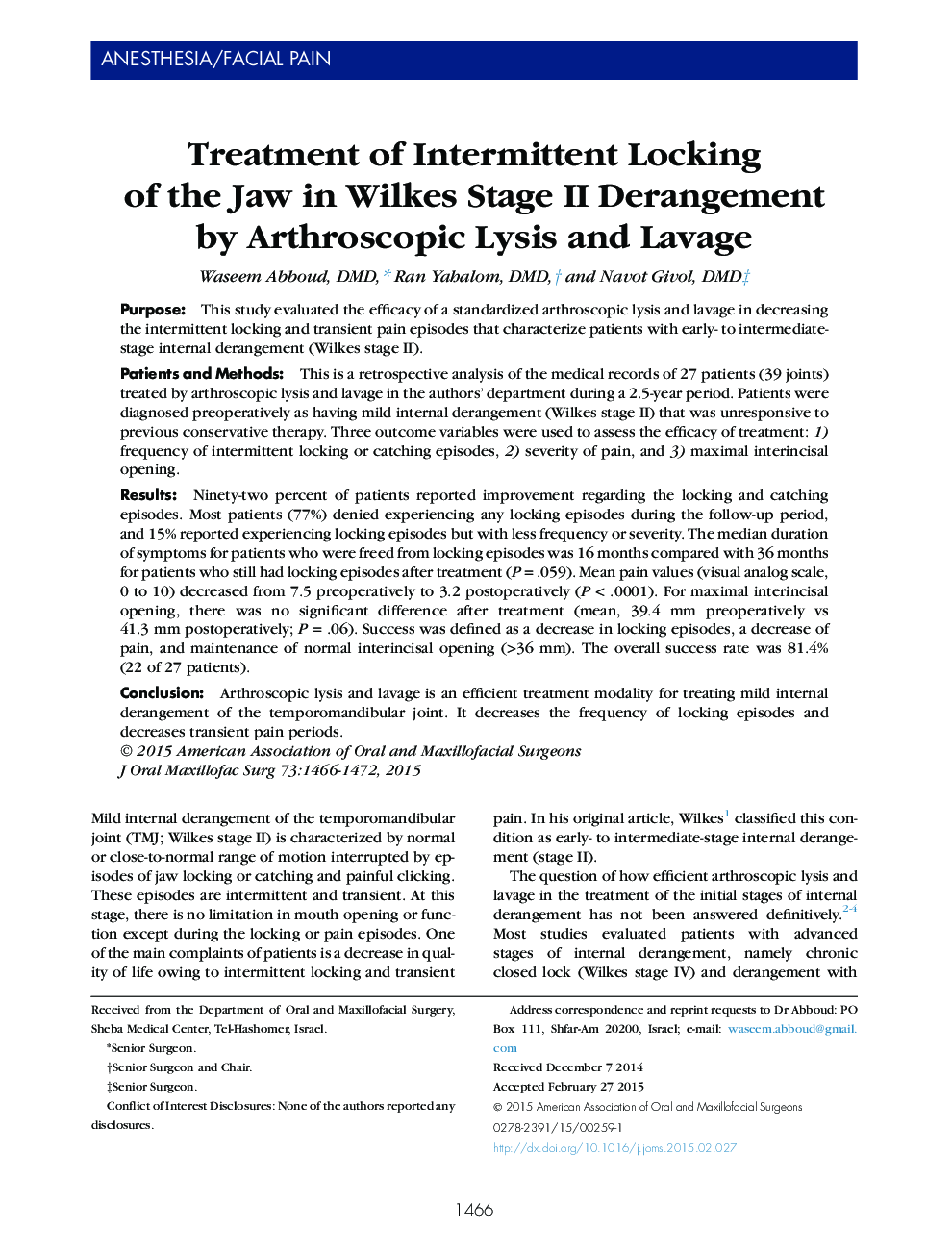| Article ID | Journal | Published Year | Pages | File Type |
|---|---|---|---|---|
| 3152316 | Journal of Oral and Maxillofacial Surgery | 2015 | 7 Pages |
PurposeThis study evaluated the efficacy of a standardized arthroscopic lysis and lavage in decreasing the intermittent locking and transient pain episodes that characterize patients with early- to intermediate-stage internal derangement (Wilkes stage II).Patients and MethodsThis is a retrospective analysis of the medical records of 27 patients (39 joints) treated by arthroscopic lysis and lavage in the authors' department during a 2.5-year period. Patients were diagnosed preoperatively as having mild internal derangement (Wilkes stage II) that was unresponsive to previous conservative therapy. Three outcome variables were used to assess the efficacy of treatment: 1) frequency of intermittent locking or catching episodes, 2) severity of pain, and 3) maximal interincisal opening.ResultsNinety-two percent of patients reported improvement regarding the locking and catching episodes. Most patients (77%) denied experiencing any locking episodes during the follow-up period, and 15% reported experiencing locking episodes but with less frequency or severity. The median duration of symptoms for patients who were freed from locking episodes was 16 months compared with 36 months for patients who still had locking episodes after treatment (P = .059). Mean pain values (visual analog scale, 0 to 10) decreased from 7.5 preoperatively to 3.2 postoperatively (P < .0001). For maximal interincisal opening, there was no significant difference after treatment (mean, 39.4 mm preoperatively vs 41.3 mm postoperatively; P = .06). Success was defined as a decrease in locking episodes, a decrease of pain, and maintenance of normal interincisal opening (>36 mm). The overall success rate was 81.4% (22 of 27 patients).ConclusionArthroscopic lysis and lavage is an efficient treatment modality for treating mild internal derangement of the temporomandibular joint. It decreases the frequency of locking episodes and decreases transient pain periods.
